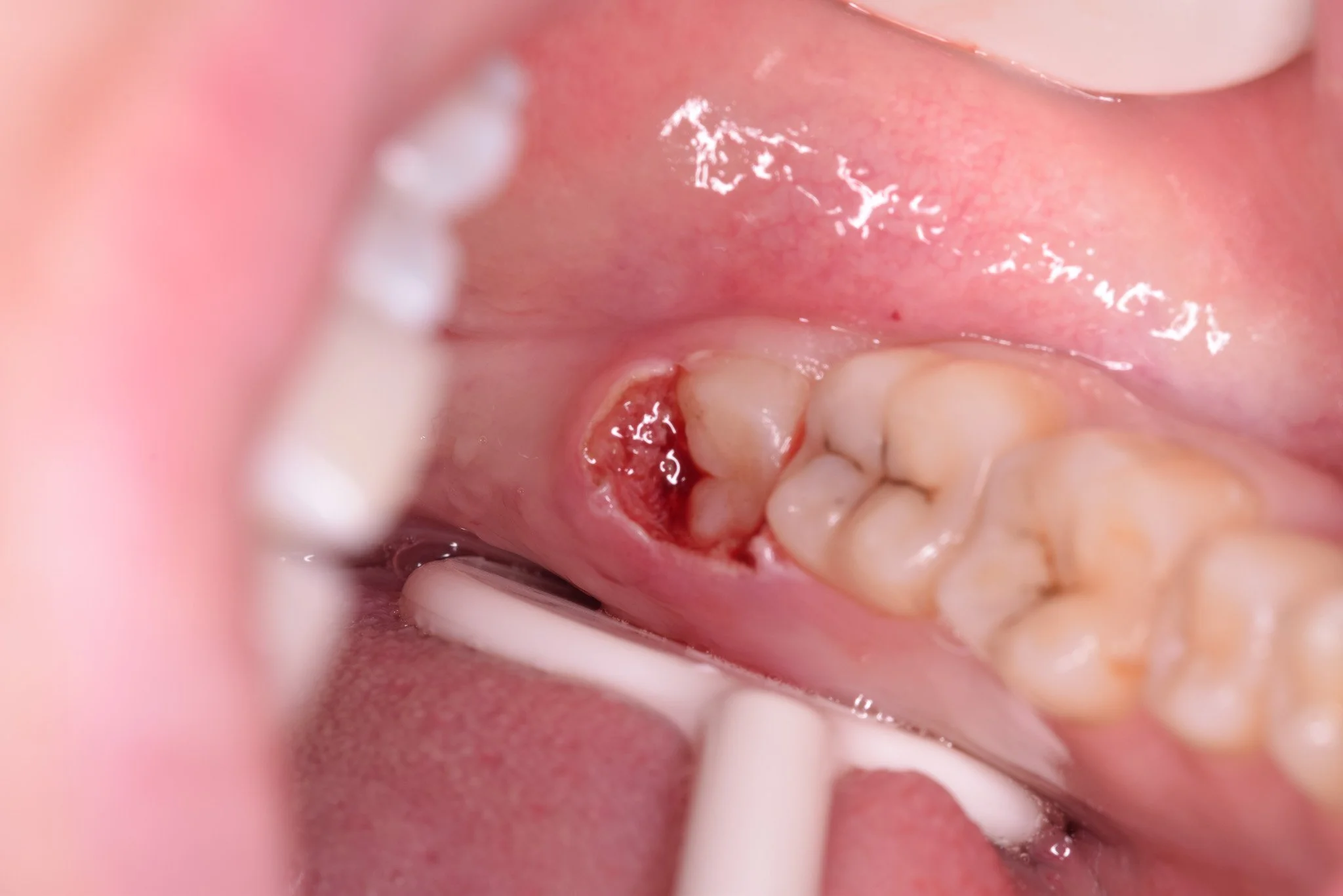If you’ve been having problems with one of your wisdom teeth - pain, swelling, or food getting stuck, you might have been told you have something called pericoronitis. Often, this is caused by a flap of gum tissue partially covering your tooth. One way to solve this is with a minor procedure called an operculectomy.
At Nova Smiles, we want to help you understand what this is, why it might be recommended for you, and what to expect before, during and after the procedure.
What is an Operculectomy?
An operculectomy is a small surgical procedure to remove the flap of gum tissue (called the operculum) that partially covers a tooth, most commonly a wisdom tooth at the back of your mouth.
This gum flap can trap food and bacteria, which may lead to repeated infections, swelling, pain, bad breath, and discomfort when chewing. Some people also find they accidentally bite on the loose flap, which can make it even more sore and inflamed.]
By removing the gum flap, your dentist exposes more of the tooth surface, making it easier for you to keep the area clean and reducing the risk of food and bacteria getting trapped again. This helps prevent further infections and irritation.
The photos below show an operculectomy procedure before and after.
A wisdom tooth with overgrown gum tissue
The gum has been cut back with an electrosurge to allow cleaning
1 week after treatment. Some of the gum has grown back, but it’s much easier to manage
Why Might I Need One?
You may need an operculectomy if you have:
Repeated episodes of pericoronitis (infection and inflammation around a partially-erupted tooth).
Difficulty cleaning under the gum flap.
Pain or swelling that keeps coming back, despite antibiotics or rinses.
Difficulty opening your mouth fully or chewing properly.
Sometimes, the gum tissue does not shrink back naturally even after the tooth fully erupts, so the flap remains a problem. In those cases, removing it is often the best option.
How Do I Know If It’s Right For Me?
For many people, an operculectomy is a simple and effective way to solve the problem quickly without having to remove the tooth. However, it’s important to understand that this may not be a permanent solution. In some cases, the gum can grow back over time, or further problems with the wisdom tooth may develop, meaning an extraction could still be needed later on.
Your dentist should talk you through the pros and cons and help you decide what’s best for your situation.
Alternative Options to an Operculectomy
Depending on your situation, other options may include:
Managing with good oral hygiene, saltwater rinses, and occasional cleaning.
Taking antibiotics when infection flares up (not a long-term solution).
Removing the tooth completely (extraction).
Removing the opposing tooth (if you keep biting on the operculum).
Your dentist will discuss the pros and cons of each option so you can make the right choice for you.
What Happens During the Procedure?
An operculectomy is a quick and straightforward procedure. Here’s what usually happens:
Numbing the area – Your dentist will give you a local anaesthetic injection so you don’t feel pain.
Removing the tissue – The flap of gum is cut away using either:
A small surgical scalpel – This is the traditional method, where your dentist uses a very fine, sterile blade to carefully trim away the excess gum tissue. It allows for precise control and leaves a clean cut, though some minor bleeding is normal.
A soft tissue laser – The dentist uses a focused light beam to remove the gum tissue. The laser seals small blood vessels as it cuts, which means less bleeding and potentially quicker healing. It also reduces the chance of infection because of its sterilising effect.
An electrosurgery tip – This uses a fine heated wire or electrode to cut through the gum using controlled electrical energy. It also cauterises as it cuts, reducing bleeding and making the area easier to keep clean during the procedure.
Cleaning the area – The dentist makes sure the area is clean and smooth.
No stitches usually needed – Because the gum is only trimmed, stitches are often unnecessary.
The whole process usually takes less than 30 minutes.
Does an Operculectomy Hurt?
You shouldn’t feel any pain during the procedure because of the anaesthetic. Afterwards, it’s normal to feel a little sore for a few days, but this can usually be managed with over-the-counter painkillers.
An electrosurgery tip works by delivering a controlled electric current that heats and cuts or cauterises soft tissue precisely with minimal bleeding.
Operculectomy Aftercare
Your dentist or hygienist will give you specific instructions. Healing usually takes about a week, but general advice includes:
Keep the area clean by gently rinsing with warm salt water starting the next day.
Avoid very hot, spicy, or hard foods for a couple of days.
Keep up good brushing and flossing, but be gentle around the site.
Take any prescribed painkillers or mouthwash as advised.
Risks of an Operculectomy
Like any dental procedure, there are some risks, though they are rare. These include:
Bleeding from the site (usually mild and stops quickly).
Infection (your dentist will advise you what to look out for).
The gum tissue growing back over time (in which case it may need to be removed again). This is the most common risk you need to be aware of.
If you notice heavy bleeding, severe pain, or signs of infection (like pus or fever), contact your dentist straight away.
Still have questions?
If you want to speak to one of our dentists for some personalised advice about operculectomies, click the button below and get in touch :)



